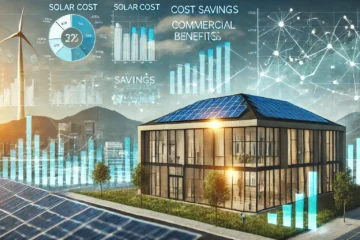“This year will mark the first time in history that renewable power will be the largest area of energy investment.”
-Michele Della Vigna of Goldman Sachs
As COP26 winds down and we start to hear about the last-minute pledges compiled at the conference (we will have a future blog on all the INDCs, what they mean and where it will land us) an important element that has shockingly been largely ignored is figuring out what the collective pledges mean in terms of average global temperature rise. Since the well-intentioned Paris Accord, where applause was short-lived when we found out the new target was 1.5 degrees above pre-industrial levels, we have not been able to articulate a coherent way to actually reach it. In fact, it was well-known that even after saying 1.5 was what we were shooting for, the collective goals would land us at just over 3.
So- what are some of the promises we are hearing this time? Well, there is apparently an unspecified commitment to end fossil fuel funding, India says they will be net zero by 2070 (whut??), and deforestation will be reduced to zero by 2030 (sigh). We also saw some stark reminders of who some of the worst emitters are: U.S. & China (China responsible for 26% of global emissions; U.S. at 13%). With recent climate pushes, the new warming number is apparently 2.7 degrees over pre-industrial levels at the current rate, although the IEA has splashed in some hope saying that if all nations strictly keep to their new pledges, we could keep it as low at 1.8. That’s a big IF. In either scenario, the Paris 1.5 number looks more & more daunting as we barrel towards the point of no return leaving ourselves with fewer options down the road to do anything about it.
Photo credit: Kevin Harris @unsplash
According to Wai-Shin Chan, HSBC global head of Climate Change Center, the focus now needs to be on strong legislation & bold policies as world leaders return to their countries on renewed pledge ideas. Meaningful progress will depend on meaningful change. But we’ve heard much of this before, that leaders (and everyone watching) understand that in order to stop the climate crisis, we need to stop the fossil fuel funding. Yet as Bloomberg points out, $600 billion was spent on fossil fuel support by G-20 countries in 2020. We’ve got some work to do- fast.
Read Also:
Photo credit: NASA
Hints of Change from the Financial Sector
Mark Carney, ESG (environmental, social, governance) strategist & vice-chairman of Brookfield Asset Management, said at the conference that “more than 450 financial firms representing $130 trillion of assets have pledged to bring their lending and investing activities in line with the goals of the 2015 Paris agreement.”
Given the fact that we’ve watched many other COP meetings with hopeful positivity in the past, only to see dwindled effect of forgotten speeches and tossed-aside pledges in the immediate aftermath, relying on governments to implement stated (yet not legally binding) goals have left us in an increasingly untenable position. Could it be, ironically, that the markets bring an end to fossil fuels before the governments get around to it?
Photo credit: Hydro
Hope in the form of shifting capital
According to a recent analysis done by Michele Della Vigna of Goldman Sachs, a massive shift in capital allocation is underway. A decade ago, the cost of capital was basically the same for oil/gas projects as renewable projects, making it hard for the newcomer (renewables) to have an edge over the business-as-usual model. Oil & gas what what they knew. Fast forward to today: Della Vigna says the threshold for projected return on an oil project is 20%, for LNG it is 10%, while a renewable project is 3-5%. Will Hares of Bloomberg notes that the likely reason is two-fold. One is the rising pressure and attention on ESG investing which has led to debt-financing challenges. The other is depressed valuations (knowing that in the near-enough future these projects will be just an infrastructure of stranded assets). As clean energy advocates, we have seen how slowly legislative processes can be and how watered-down climate bills can get when they go through the motions “necessary to pass it.” While this climate solution avenue has resulted in consistently coming up short, our last fall back may be a tired adage:
Money talks.
Main photo credit Rob Miller @unsplash







